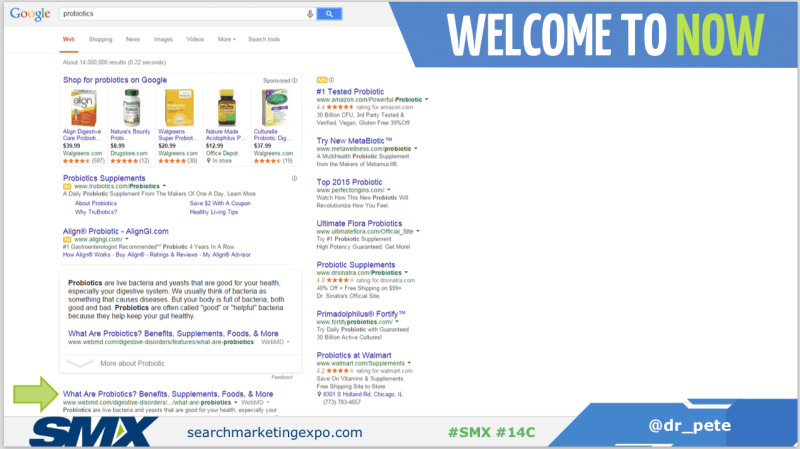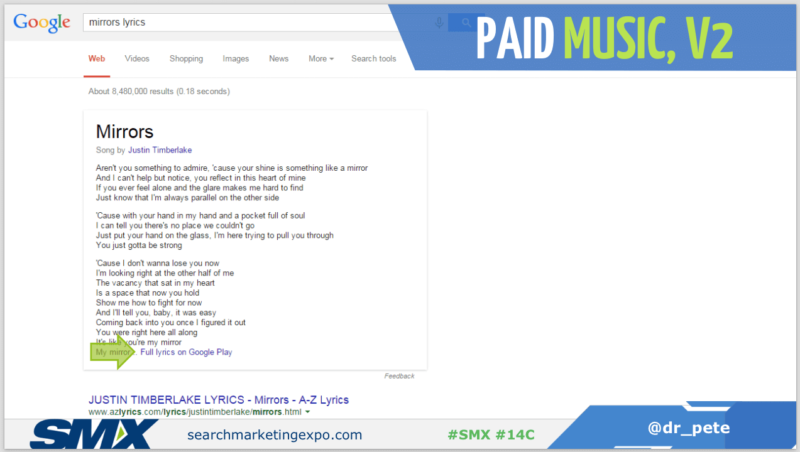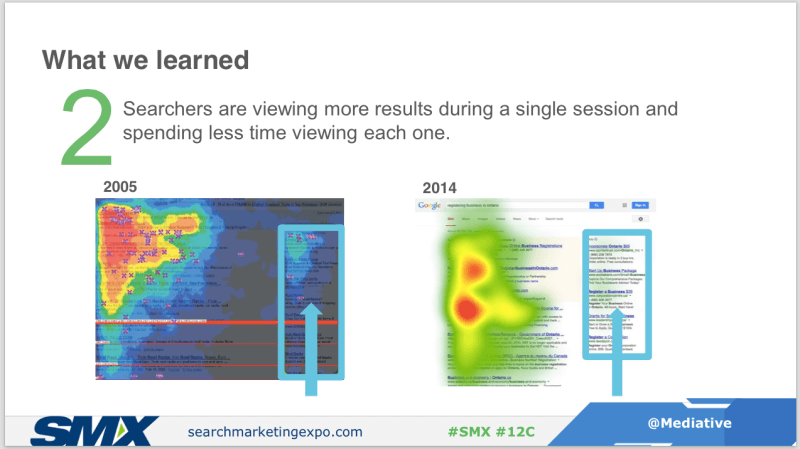The Evolution Of Google SERPs: Three Key Takeaways From SMX West 2015
We all know search engine results pages look different these days. Contributor Adam Dorfman shares information from experts that quantifies the difference and explains how marketers can cope.

Last week’s SMX West event provided some great insights into the future of search, which continues to be one of the most rewarding — and complex — areas of digital marketing.
While I only was able to attend half the sessions I earmarked, one theme that clearly stood out is just how quickly and frequently Google changes its search engine results pages (SERPs). Here are three specific examples of how SERPs continue to evolve:
1. SERPs Continue To Change
Dr. Pete Meyers’ presentation very clearly articulated how search engine results pages continue to move away from traditional links in favor of additional content like map packs, product listings, direct answers, knowledge graph boxes, and so on. (See his full presentation embedded below.)
If your sole goal in search marketing is getting high organic rankings, you are missing the boat. Whether it be due to product ads or image search results — or whatever else — those traditional organic blue links sometimes don’t even make it above the fold these days.
As a search marketer, it is important to focus on a broader range of content and data sources that populate search results pages, not just your website.
2. Direct Answers In SERPs
Dr. Pete also pointed out how paid advertising in Google search results is extraordinarily nebulous right now. When people search for lyrics on Google, links to Google Play appear, essentially making this knowledge graph result an ad (albeit a house ad) without labeling it as such.
Similar to Eric Enge’s recommendations during his presentation in the Direct Answers session, it is important to ensure that your business model isn’t reliant upon information that is easily parsed and served directly to searchers on Google, supplanting the need for them to visit your own website.
3. More Info In SERPs
Finally, Google’s iterative approach to SERPs has allowed people to ingest more information in less time than it took ten years ago.
Gord Hotchkiss presented results of an eye-tracking study that found that searchers spent just over 1.17 seconds viewing each listing in 2014, while in 2005 they spent just under 2 seconds. That increased speed allowed people to view more listings before making a click in 2014 versus 2005. (Full presentation embedded below.)
According to Hotchkiss, the creep of all of this additional information hasn’t necessarily made it more difficult for us to figure out what to click on, because it’s presented well.
Google’s SERPs are going to continue to change; often times, these changes are done so iteratively that they go unnoticed. Keeping an eye on some of these incremental changes today will help keep you ahead of the pack tomorrow and beyond.
https://www.slideshare.net/SearchMarketingExpo/dr-petes-guide-to-the-changing-google-serps
Contributing authors are invited to create content for Search Engine Land and are chosen for their expertise and contribution to the search community. Our contributors work under the oversight of the editorial staff and contributions are checked for quality and relevance to our readers. The opinions they express are their own.
Related stories
New on Search Engine Land



